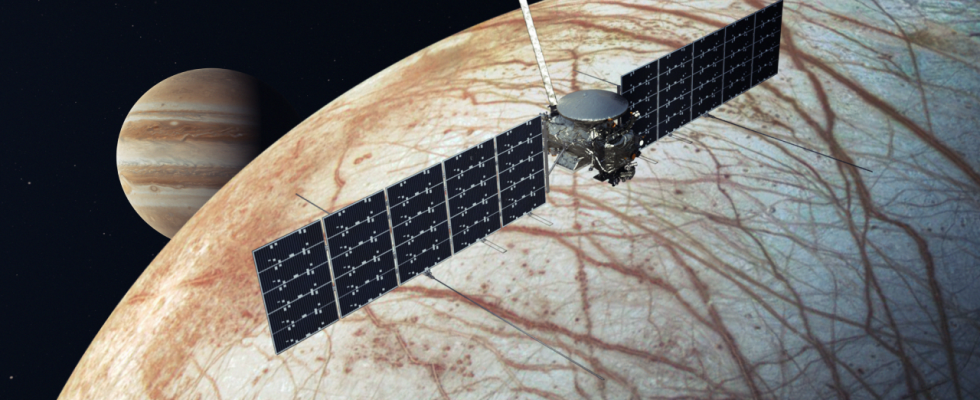The search for life outside Earth has been a hot topic in astronomy for several decades. In part, this is due to advances in technology and methods for searching for so-called biosignatures. One of the most famous examples is the James Webb Telescope, which has the technology to observe the atmospheres of exoplanets.
The focus of the search is on the solar system itself. Mars and Venus are constantly being searched for evidence that life once existed there. However, astronomers are focusing on worlds that are a little further away: the moons of Saturn and Jupiter. Some of these moons, such as Enceladus and Europa, could harbor life.
Europa Clipper, due to launch later this year, is a NASA mission that the moon Europa on the planet Jupiter should be studied in detail. In one article published in Science it says that if the spacecraft can capture a grain of ice from the moon, there is a chance of finding evidence of life within the next few years.
Europe
Saturn and Jupiter are planets that hold the record for the number of moons they have. One of these moons is Europa, one of the largest moons of the planet Jupiter. It was one of the first moons discovered by Galileo Galilei in the 17th century. Much of the atmosphere is made up of oxygen and it probably has an ice crust.

The most striking thing about the moon is the possible presence of a liquid ocean beneath the icy surface. Evidence, including jets of water emerging from the natural satellite, suggests that Europe has almost twice as much water as Earth. Exploring the possible habitability of the Moon is one of the goals of astronomers around the world.
Why seek life in Europe?
The moon has some interesting features that have been linked to the search for life beyond Earth. The most important of these is the presence of liquid water in a saline ocean. Liquid water is importantThe most striking thing about the moon is the possible presence of a liquid ocean beneath the icy surface. Evidence, such as water flows coming from natural sources, has shown that Europe has almost twice as much water as Earth. Increasing the amount of water available to Earth is one of the goals of astronomers around the world.
More Important points that contribute to the search for life on Europa are the moon’s chemical composition and energy source. The planet’s atmosphere consists of oxygen and water molecules, which can be broken down by an energy source from the planet Jupiter. In this way, a quantity of free oxygen would be available that could take part in chemical reactions.
Europe Clipper
To learn more about the moon, NASA developed the Europa Clipper mission. The probe will orbit the Moon and collect data about the Moon’s composition, its surface and its interaction with Jupiter. This data could provide better clues about whether Europe is a habitable world or not.

The mission was scheduled to launch in June last year, but was postponed and the new mission was launched in October this year. According to the current schedule, the probe will reach Jupiter in 2030. Over the next few years, the probe will orbit between Mars and Earth to receive the gravitational forces that can pull it toward Jupiter.
Life in the coming years?
The mission is not intended to search for life on Europa, but a study that in Science published, assumes that it will be possible to use the mission to search for evidence. The idea is to capture ice grains that surround the region in a kind of cloud These grains escape the planet’s surface through processes that eject jets.
The group simulated a similar environment in the laboratory using bacteria to test whether it was possible to detect them even after passing through extremes. The team found that it is possible to find bacteria, or at least some of them, even in the grains. This would be a sign that life could be present in these grains on Europa.
What to expect?
The reality, however, is somewhat less interesting than the evidence of life in science fiction. The European instruments developed by Clipper are unable to detect DNA. The goal is to find lipids and acids that are important in biological cells and could be found in the lunar ocean.
However, This evidence is an interesting step in the search for life beyond Earth. And it would be interesting to know that we are not the only creatures that inhabit this solar system.

